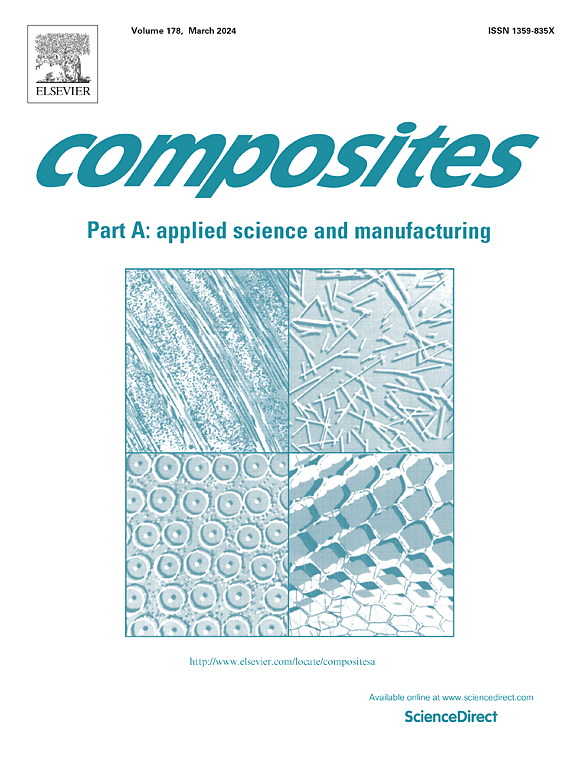Pseudo-ductile compressive behaviour of unidirectional thin-ply carbon /glass fibre-epoxy hybrid composites
IF 8.1
2区 材料科学
Q1 ENGINEERING, MANUFACTURING
Composites Part A: Applied Science and Manufacturing
Pub Date : 2025-03-21
DOI:10.1016/j.compositesa.2025.108877
引用次数: 0
Abstract
Favourable pseudo-ductile behaviour under compressive loading with a knee-point was achieved for unidirectional (UD) interlayer hybrids made of thin-ply high modulus carbon/epoxy (CF/EP) layers sandwiched between standard thickness glass/epoxy (GF/EP). The UD thin-ply hybrids were tested under two loading scenarios: 1. Direct compressive loading, 2. Four-point bending loading. In both cases, the damage mechanisms responsible for the pseudo-ductile behaviour are fragmentation of the carbon layer and localised delamination, which later propagates unstably. The final failure of the UD thin-ply hybrid composites examined in four-point bending loading occurs at a higher strain than that under direct compressive loading. This is due to the strain gradient in bending, which results in a lower energy release rate than in direct compression. An increasing carbon layer thickness reduces the final delamination failure strain of the UD thin-ply hybrid composites in compression, but the knee-point strain is not affected.
单向薄层碳/玻璃纤维-环氧混合复合材料的伪韧性抗压行为
本文章由计算机程序翻译,如有差异,请以英文原文为准。
求助全文
约1分钟内获得全文
求助全文
来源期刊

Composites Part A: Applied Science and Manufacturing
工程技术-材料科学:复合
CiteScore
15.20
自引率
5.70%
发文量
492
审稿时长
30 days
期刊介绍:
Composites Part A: Applied Science and Manufacturing is a comprehensive journal that publishes original research papers, review articles, case studies, short communications, and letters covering various aspects of composite materials science and technology. This includes fibrous and particulate reinforcements in polymeric, metallic, and ceramic matrices, as well as 'natural' composites like wood and biological materials. The journal addresses topics such as properties, design, and manufacture of reinforcing fibers and particles, novel architectures and concepts, multifunctional composites, advancements in fabrication and processing, manufacturing science, process modeling, experimental mechanics, microstructural characterization, interfaces, prediction and measurement of mechanical, physical, and chemical behavior, and performance in service. Additionally, articles on economic and commercial aspects, design, and case studies are welcomed. All submissions undergo rigorous peer review to ensure they contribute significantly and innovatively, maintaining high standards for content and presentation. The editorial team aims to expedite the review process for prompt publication.
 求助内容:
求助内容: 应助结果提醒方式:
应助结果提醒方式:


